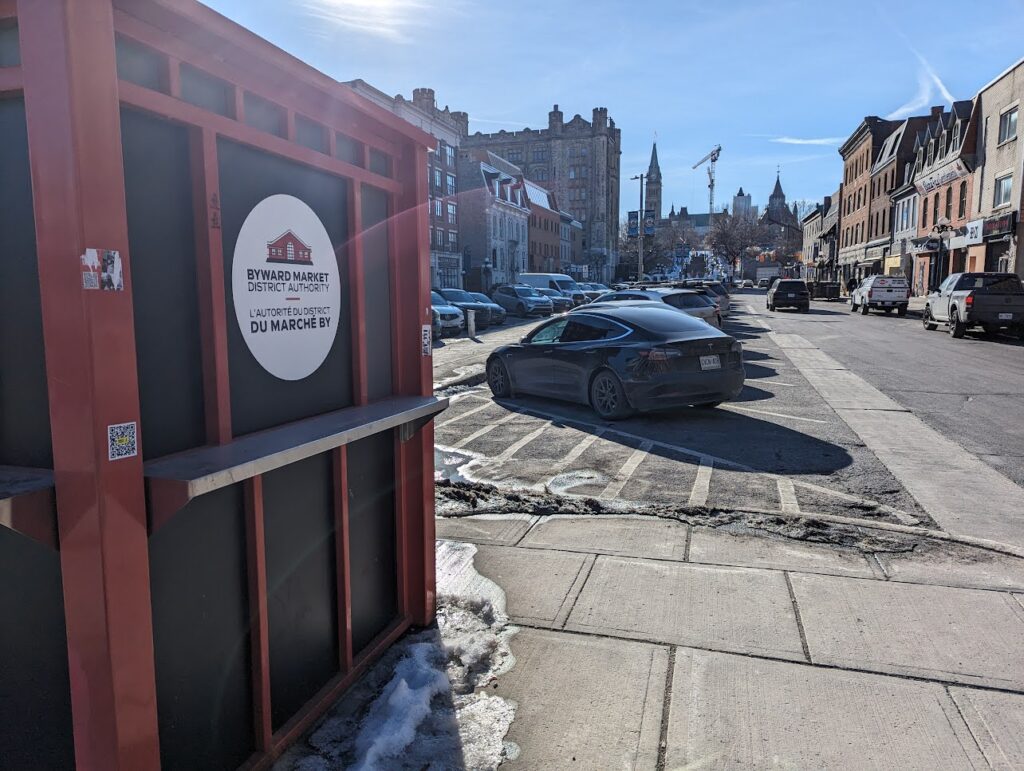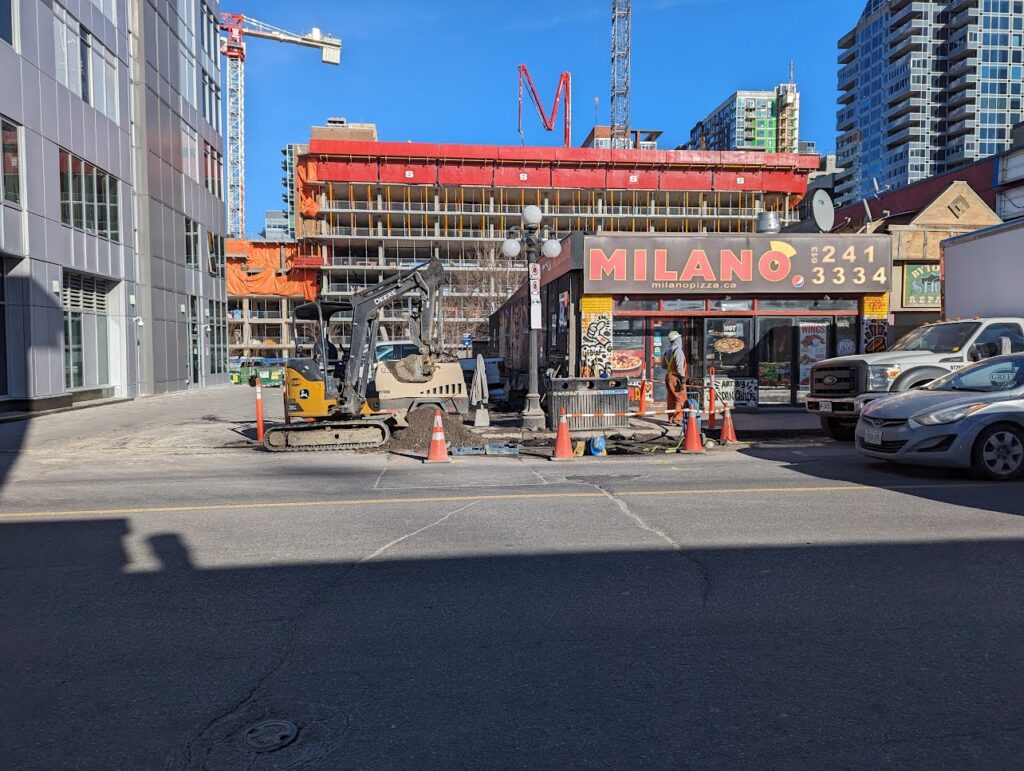The Byward Market, a jewel in Ottawa’s crown, has long been celebrated for its vibrant history, eclectic mix of shops, and bustling street life. But in recent years, this iconic area has faced significant challenges, from safety concerns to a decline in local business vitality. The city’s ambitious revitalization plan for Byward Market isn’t just a facelift; it’s a deep-rooted effort to rejuvenate its essence while respecting its rich heritage. This article delves into the transformation of the Byward Market, analyzing its historical significance, addressing current challenges, and unfolding the promising future ahead.

As we embark on this journey, we’ll explore the market’s origins, tracing back to its establishment in the early 19th century and how it has evolved into a central hub of cultural and economic activity in Ottawa. Despite its historical charm, the market has not been immune to the urban challenges of the 21st century. We’ll delve into the pressing issues of safety and crime that have cast a shadow over the area, impacting both residents and local businesses.
The heart of our discussion lies in the detailed revitalization plan put forth by the City of Ottawa. This plan is a multi-faceted approach aiming to enhance safety, improve infrastructure, and create inclusive community spaces. We’ll break down the specifics of this plan, including the strategies and investments aimed at transforming the market into a safer and more vibrant space.
Local businesses are the backbone of Byward Market, and their survival and prosperity are crucial to the area’s revival. We’ll examine the impact of these revitalization efforts on these businesses, considering how enhanced safety and infrastructure could attract more visitors and stimulate economic growth.
Finally, we’ll look towards the future, imagining a revitalized Byward Market that honors its past while embracing change. This section will paint a picture of what the market could become: a safe, thriving, and inclusive space that continues to be a beloved destination for both locals and tourists.
Historical Significance of Byward Market
The Origins and Evolution
The Byward Market, a name synonymous with Ottawa’s culture and history, has its roots deeply embedded in the early 19th century. Established by Lieutenant-Colonel John By in 1826, the same visionary engineer behind the Rideau Canal, the market was initially a trading area for local farmers and woodsmen. It quickly grew into a bustling commercial hub, drawing merchants, craftsmen, and residents alike, creating a melting pot of cultures and commerce.
Architectural and Cultural Heritage
The market’s architectural landscape, with its blend of Victorian-era buildings and modern structures, tells the story of Ottawa’s evolution. These historic buildings, some of which have stood for over a century, are not just architectural marvels but are repositories of countless stories and memories. The market has been a witness to Ottawa’s transformation from a modest lumber town to Canada’s capital.

The Market’s Role in Community Life
Historically, the Byward Market has been more than a commercial center; it’s a social and cultural heart of Ottawa. It has hosted generations of family-run businesses, artisan stalls, and local eateries, becoming a place where community ties are strengthened. Festivals, street performers, and public gatherings here have not just entertained but also helped knit the fabric of a diverse and vibrant community.
The Evolution of Commerce
From its early days of timber trade to the present mix of retail shops, restaurants, and arts and crafts vendors, the market has continually adapted to the changing needs of the city. It has become a tourist destination, known for its local produce, artisanal crafts, and a culinary scene that mirrors the city’s multicultural ethos.
Challenges and Resilience
Despite facing challenges like fires, economic downturns, and the more recent impacts of the pandemic, the market has demonstrated remarkable resilience. Each challenge has been met with a collective spirit from the community and businesses, reinforcing the market’s role as an enduring symbol of Ottawa’s perseverance and community strength.
Current Challenges and Community Concerns
Safety and Crime
One of the most pressing issues facing the Byward Market today is safety. Over the years, there has been an increasing concern about crime rates in the area. Reports suggest a rise in violent incidents, which has caused apprehension among both residents and visitors. This perception of insecurity is more than a social issue; it affects the economic vibrancy of the market, as potential visitors and shoppers may choose to avoid the area.

Impact on Local Businesses
The heightened security concerns have had a direct impact on local businesses. Many small business owners report challenges such as reduced foot traffic and concerns about the well-being of their customers and staff. These issues are compounded by the economic strains of the recent pandemic, which have left many businesses struggling to survive.
Residential Concerns
For residents of the surrounding neighborhoods, the market’s safety issues have raised concerns about quality of life. Incidents of public intoxication, drug use, and other social problems have been noted as increasingly prevalent, affecting the community’s sense of safety and cohesiveness.
Urban Planning and Infrastructure Challenges
The market also faces challenges related to urban planning and infrastructure. Issues such as congestion, inadequate parking, and the need for better public spaces have been identified as areas needing attention. These infrastructural challenges, if unaddressed, could hinder the market’s ability to attract visitors and sustain a vibrant community.
Response to COVID-19 Pandemic
The COVID-19 pandemic brought unique challenges to Byward Market, affecting both its social fabric and economic health. The closure of businesses during lockdowns and the subsequent decrease in tourism have had a significant impact, highlighting the need for a resilient plan to address both current and future challenges.
The Revitalization Plan

City’s Vision and Strategic Initiatives
The City of Ottawa’s revitalization plan for Byward Market is a comprehensive strategy designed to address the various challenges facing the area. The vision is to transform the market into a safer, more vibrant, and economically sustainable space. Key initiatives include enhancing public safety, improving infrastructure, and fostering a more inclusive and community-focused environment.
Safety and Security Measures
A core component of the revitalization plan focuses on improving safety and security. This involves increased police presence, the implementation of community policing strategies, and partnerships with local organizations to address social issues. The plan also includes installing better lighting and surveillance systems to deter crime and enhance the sense of security for both residents and visitors.
Infrastructure and Public Space Enhancement
Infrastructure improvement is another critical aspect of the plan. This includes redesigning streets to reduce congestion, creating more pedestrian-friendly areas, and enhancing public spaces. The idea is to make the market more accessible and inviting, encouraging people to visit and spend time in the area.
Supporting Local Businesses
The plan recognizes the vital role of local businesses in the market’s ecosystem. Measures to support these businesses include financial incentives, marketing assistance, and facilitating events that draw visitors to the area. The goal is to create a thriving commercial environment where businesses can flourish.

Community Engagement and Cultural Preservation
Community engagement is at the heart of the revitalization efforts. The plan involves working closely with local residents, business owners, and stakeholders to ensure that the market’s development reflects the needs and aspirations of the community. Additionally, there’s a strong emphasis on preserving the cultural and historical heritage of the market, ensuring that any development respects and celebrates its rich past.
Sustainability and Future Growth
Sustainability is a key focus, with initiatives aimed at making the market environmentally friendly and economically viable for the long term. This includes green infrastructure projects and policies that support sustainable business practices. The plan also looks at future growth, ensuring that the market can adapt and thrive in the changing urban landscape.
Impact on Local Businesses and Economy
Revitalization Boosting Business Confidence
The Byward Market revitalization plan is expected to significantly boost local business confidence. By addressing safety and infrastructure issues, the plan aims to create an environment where businesses can thrive. Improved safety measures are anticipated to encourage more foot traffic, which is essential for retail and hospitality sectors.
Economic Growth through Tourism and Events
Tourism plays a crucial role in the market’s economy. The revitalization efforts, by enhancing the area’s appeal, are projected to attract more tourists. Events and festivals, which have historically been a major draw, will benefit from the upgraded infrastructure and public spaces, further boosting visitor numbers and spending.
Support and Resources for Businesses
The plan includes specific support measures for businesses, such as financial incentives and marketing assistance. These efforts are designed to help businesses recover from the economic impact of the pandemic and adapt to the changing market conditions. Furthermore, the plan aims to attract new entrepreneurs and innovators, diversifying the market’s business landscape.

Impact on Property Values and Investment
Revitalization is expected to positively impact property values in the area, making it an attractive location for investors. This could lead to more development and business opportunities, contributing to the market’s overall economic health.
Challenges and Opportunities
While the revitalization brings numerous opportunities, it also presents challenges, especially for existing businesses that may face disruptions during the redevelopment phase. The city’s plan includes strategies to mitigate these impacts and ensure that the benefits of revitalization are shared across the community.
The Future of Byward Market
A Vision for a Revitalized Community
The future of Byward Market, post-revitalization, presents a vision of a vibrant, inclusive, and dynamic community. The efforts made in improving safety, infrastructure, and business support are expected to culminate in a transformed market that balances modernity with its rich heritage.
Enhanced Community Engagement and Cohesion

Revitalization aims to foster greater community engagement and cohesion. With improved public spaces and facilities, the market is envisioned to become a hub for community activities, cultural events, and social gatherings, strengthening the bonds among residents and visitors.
A Destination for All
The future Ottawa’s Byward Market is set to be a destination that caters to a diverse range of interests and needs. Whether it’s for shopping, dining, cultural experiences, or leisure activities, the market will offer something for everyone, making it a must-visit location in Ottawa.
Sustainable and Resilient Market
Sustainability is a key aspect of the market’s future. The implementation of green initiatives and sustainable practices is expected to make the market a model for urban environmental responsibility. Additionally, the economic strategies put in place aim to ensure the market’s resilience to future challenges.
Preserving the Historical Essence
Despite the changes and developments, preserving the historical essence of Byward Market remains a priority. The future market will continue to celebrate its history, maintaining the architectural charm and cultural legacy that make it unique.
A Model for Urban Revitalization
Finally, Ottawa Byward Market’s revitalization could serve as a model for other urban areas facing similar challenges. It demonstrates how a thoughtful, community-focused approach can successfully transform an urban area while respecting its history and identity.
